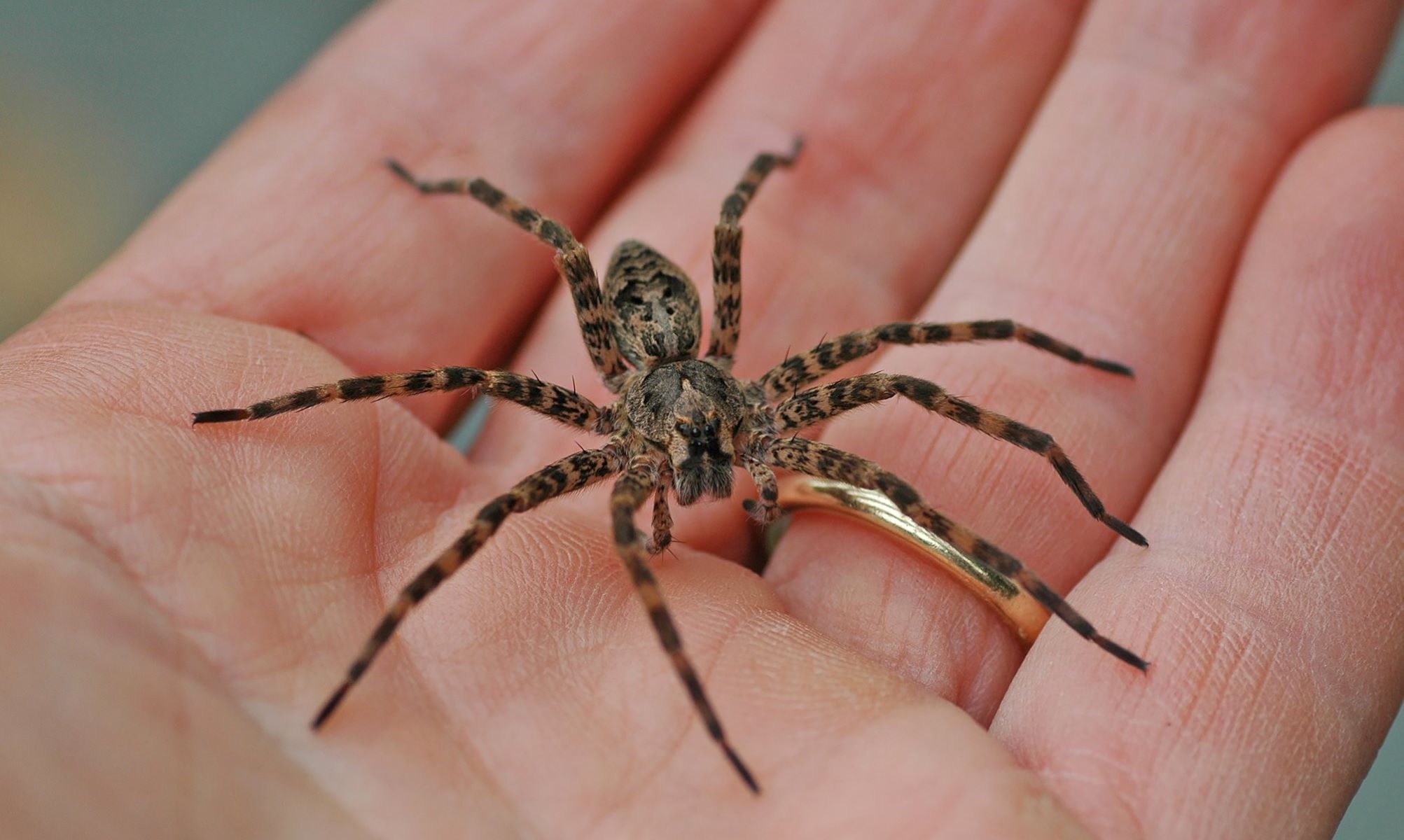
The fishing spider, scientifically known as Dolomedes, is a fascinating creature that has caught the attention of both nature enthusiasts and arachnologists. These spiders have developed incredible adaptations that allow them to thrive in aquatic environments, making them stand out from their terrestrial counterparts. With their unique hunting techniques and remarkable physical attributes, fishing spiders have become a subject of curiosity for many. In this article, we will delve into the world of fishing spiders and uncover some extraordinary facts about these arachnids. From their ability to walk on water to their impressive size and interesting behaviors, get ready to be amazed by the wonders of the fishing spider.
Key Takeaways:
- Fishing Spiders are masters of disguise, using their stealth and hunting techniques to thrive in various habitats and play a crucial role in balancing aquatic ecosystems.
- With their impressive size, swimming abilities, and maternal care, Fishing Spiders are extraordinary creatures that continue to fascinate researchers and nature enthusiasts alike.
The Fishing Spider is a Master of Stealth
The Fishing Spider, also known as the Dolomedes, is a fascinating creature with remarkable hunting abilities. It is adept at disguising itself, often resembling a dried leaf or a piece of bark, camouflaging perfectly among its surroundings. This allows the spider to remain undetected by both its prey and predators.
They Are Excellent Swimmers
Unlike most spiders, Fishing Spiders are equipped with long legs that enable them to effortlessly glide across the water’s surface. They use these legs to paddle and create waves, imitating the movements of insects and luring them into their grasp. These spiders can even dive underwater for extended periods, using air bubbles trapped in their body hairs as a makeshift oxygen supply.
Fishing Spiders Can Grow to Impressive Sizes
One of the most astonishing features of the Fishing Spider is its size. While some species can be as small as a few centimeters, others can reach a leg span of more than 12 centimeters, making them one of the largest types of spiders in the world. Their formidable size contributes to their intimidating presence.
They Have an Incredible Hunting Technique
As their name suggests, Fishing Spiders are exceptional fishermen. They use their specialized front legs to detect vibrations on the water’s surface caused by their unsuspecting prey. Once they pinpoint the location, they will quickly dash across the water, pouncing on their target with lightning speed. Their sharp fangs inject venom, paralyzing their prey, ready for consumption.
Fishing Spiders Are Highly Adaptable
These spiders are found in various habitats worldwide, including ponds, streams, and marshes. They are incredibly adaptable and can live harmoniously in both aquatic and terrestrial environments. Their versatility allows them to successfully thrive and maintain their population in a wide range of ecosystems.
They Exhibit Maternal Care
Unlike many other species of spiders, Fishing Spiders exhibit remarkable maternal behavior. The females lay their eggs in silk sacs and carry them around, attaching the sacs to their spinnerets. They guard and protect their offspring until they hatch, ensuring their survival in a dangerous world.
Some Fishing Spiders Can Walk on Water
Thanks to the unique structure of their legs, certain species of Fishing Spiders possess the ability to walk on water without sinking. This allows them to traverse vast stretches of open water effortlessly, expanding their hunting grounds and increasing their chances of finding prey.
They Have an Important Role in Ecosystems
The Fishing Spider plays a vital role in balancing aquatic ecosystems. By preying on small insects and other invertebrates, they help control populations and maintain the health of their habitats. They are an integral part of the intricate web of life that exists in wetland areas.
These 8 extraordinary facts about Fishing Spiders showcase their incredible abilities and adaptations, making them a truly remarkable species in the animal kingdom. Whether it’s their stealth, swimming prowess, or unique hunting techniques, these spiders continue to fascinate researchers and nature enthusiasts alike.
Conclusion
In conclusion, the fishing spider is truly an extraordinary creature. With its ability to walk on water, exceptional hunting skills, and unique behaviors, it stands out among its arachnid counterparts. These spiders have adapted remarkable techniques to survive and thrive in aquatic environments, making them a fascinating subject of study for biologists and nature enthusiasts alike. From their efficient use of vibrations to locate prey to their role in maintaining ecosystems, fishing spiders play an important part in the natural world. So next time you come across one of these eight-legged wonders, take a moment to appreciate the extraordinary nature of the fishing spider.
FAQs
Q: How do fishing spiders walk on water?
A: Fishing spiders have long, hydrophobic legs that distribute their weight and allow them to distribute their weight and walk on water’s surface tension.
Q: Are fishing spiders dangerous to humans?
A: While fishing spiders possess venom, they are generally not a threat to humans and will only bite if they feel threatened.
Q: Can fishing spiders swim?
A: Yes, fishing spiders can swim using their legs as paddles, enabling them to hunt and navigate through water.
Q: What do fishing spiders eat?
A: Fishing spiders primarily feed on insects, small fish, tadpoles, and other aquatic creatures, which they catch using their remarkable hunting techniques.
Q: Where do fishing spiders build their nests?
A: Fishing spiders typically build their nests near the water’s edge, constructing a burrow or using vegetation to create a shelter.
Q: How do fishing spiders detect prey in the water?
A: Fishing spiders are equipped with sensitive hairs on their legs that can detect vibrations on the water’s surface, helping them locate potential prey.
Q: Do fishing spiders have any predators?
A: Yes, fishing spiders have predators such as birds, lizards, and other larger spiders that feed on them.
Q: Are fishing spiders beneficial to the environment?
A: Yes, fishing spiders play a vital role in ecosystem balance by regulating insect populations and serving as a food source for other animals.
The fishing spider's incredible abilities make it a true marvel of nature. Its mastery of stealth, swimming prowess, and unique hunting techniques set it apart from other arachnids. As you've learned about this remarkable creature, your curiosity may be piqued to explore more fascinating facts about related species. Delve into the world of the striped fishing spider, known for its distinct markings and impressive adaptations. Uncover the captivating traits of the whitebanded fishing spider, a skilled predator with its own set of surprises. And don't miss out on the astonishing characteristics of the dark fishing spider, a species that thrives in shadowy habitats.
Was this page helpful?
Our commitment to delivering trustworthy and engaging content is at the heart of what we do. Each fact on our site is contributed by real users like you, bringing a wealth of diverse insights and information. To ensure the highest standards of accuracy and reliability, our dedicated editors meticulously review each submission. This process guarantees that the facts we share are not only fascinating but also credible. Trust in our commitment to quality and authenticity as you explore and learn with us.


